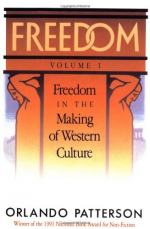
|
| Name: _________________________ | Period: ___________________ |
This test consists of 15 multiple choice questions and 5 short answer questions.
Multiple Choice Questions
1. Since the sovereignal aspect of freedom dominates this era, historians have tended to ___________ the role of freedom.
(a) Ignore.
(b) Play up.
(c) Downplay.
(d) Focus on.
2. What happens once Christianity appears?
(a) It stays in the Middle East.
(b) It spreads quickly through Greece.
(c) It spreads rapidly throughout the Roman Empire.
(d) It spreads slowly throughout the Roman Empire.
3. How do the plebeians view the civic freedom of the upper class?
(a) As something to desire.
(b) As a good compromise to their personal freedom.
(c) As a threat to their own personal freedom.
(d) As a form of personal freedom.
4. What do Jesus' followers turn into an act of glorification and propaganda?
(a) The saving of man.
(b) The scandal of the cross.
(c) The dying of God.
(d) The reason for the season.
5. Who represents Reactionary Stoicism?
(a) Charlemagne.
(b) Cato.
(c) Carl.
(d) Caitlin.
6. The fact that Jesus is crucified and dies has critics doing what?
(a) Questioning if he actually died.
(b) Wondering when he will return.
(c) Questioning the absurdity of a Messiah who can't save himself from execution.
(d) Wishing they had met Him before He died.
7. In what forms do these rights or freedoms come?
(a) Monetary gain.
(b) Events.
(c) Charters.
(d) Leadership.
8. Augustus' rule is at the expense of whose civic freedom?
(a) The slaves.
(b) The upper classes.
(c) The middle classes.
(d) The lower classes.
9. According to Augustine, from where does freedom come?
(a) As something that is inherited.
(b) As a gift from God.
(c) The mind.
(d) Others.
10. How do many of the serfs and peasants receive rights?
(a) By bribery and blackmail.
(b) By paying monetarily for some of them.
(c) By hard work.
(d) By begging for them.
11. Where are the greatest conversion rates?
(a) Among the Hellenic thinkers.
(b) In middle class societies.
(c) In upper class societies.
(d) In regions where slavery predominates.
12. What happens to the wretched who convert?
(a) They are purified of sin.
(b) They are damned.
(c) They must tithe.
(d) They go to hell.
13. Who has the most freedom in terms of the sovereignal aspect of freedom?
(a) The women.
(b) The peasants.
(c) The king.
(d) The men.
14. Law and the state of grace are _________.
(a) Related.
(b) Similar.
(c) The same.
(d) Opposites.
15. What does Jesus not intend to do?
(a) Die.
(b) Lay the foundations for a church based on his teachings.
(c) Keep the church in one part of the world.
(d) Leave the church at such a young age.
Short Answer Questions
1. The third involves the restructuring of Italian what?
2. What does Augustine basically end up doing to the role of personal freedom?
3. Freedom is mainly the domain of whom?
4. How is Rome similar to Greece?
5. What does this chapter examine?
|
This section contains 492 words (approx. 2 pages at 300 words per page) |

|




